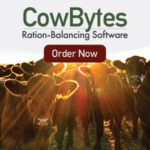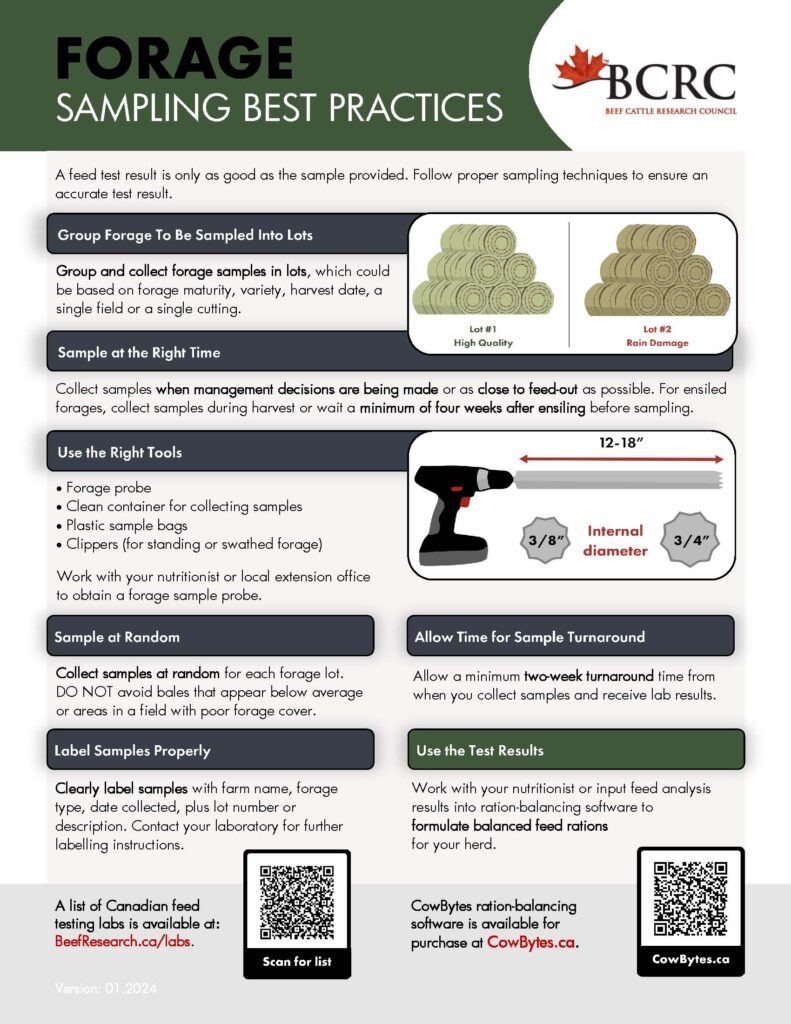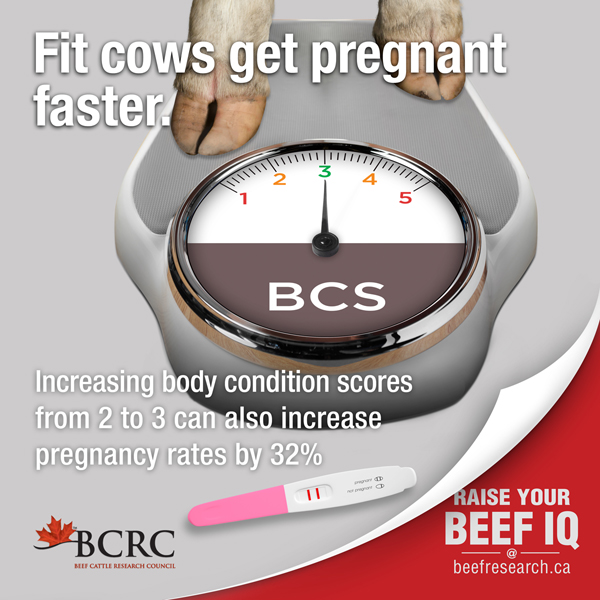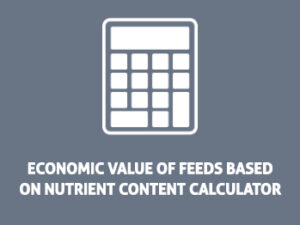Feed Testing: A Tool for Better Returns
A recent survey of more than 300 cow-calf producers across Western Canada showed only 59% of respondents had used lab-based feed testing at least once in the past three years. Among those who hadn’t tested, two-thirds believed it wasn’t necessary because their animals appeared healthy. However, subclinical nutrient deficiencies such as inadequate energy, protein or minerals can go unnoticed while quietly reducing animal performance, leading to reduced profits. Additionally, forage quality can vary significantly within a field and from year to year.
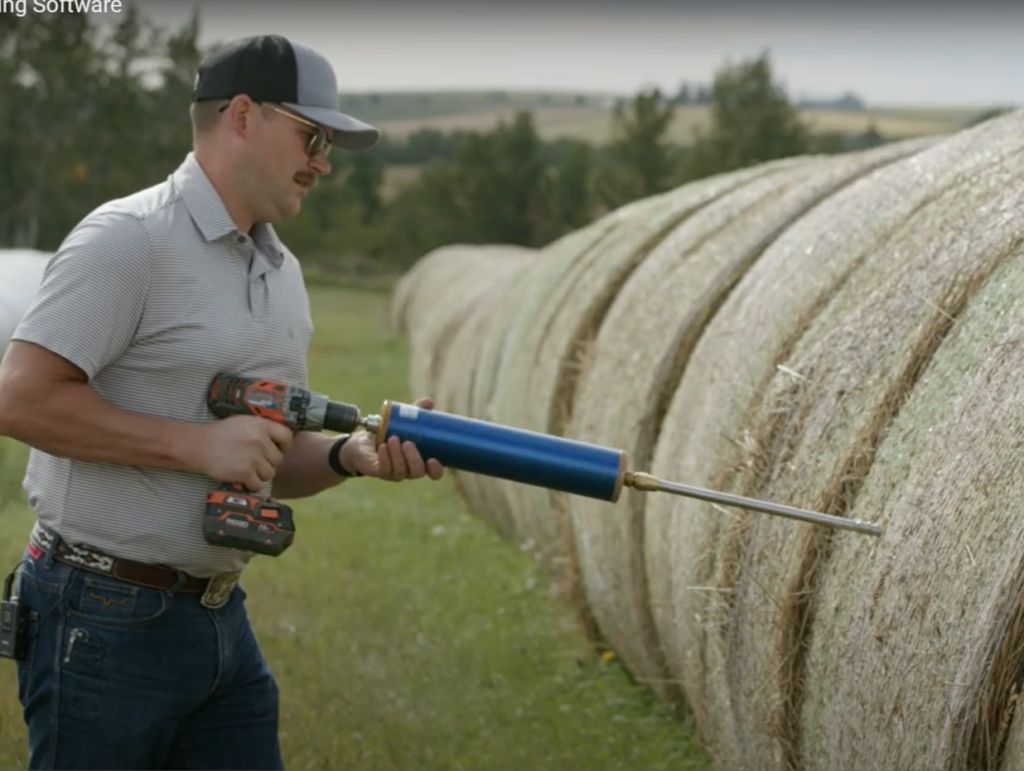
While feed testing may seem like an additional expense, the investment pays off by allowing producers to make informed decisions about ration balancing, feed efficiency and herd health.
Below are three scenarios that highlight how feed testing can unlock cost savings or protect revenue in cow-calf operations.
Scenario 1: Lower Feed Costs While Maintaining Cattle Body Condition
Feed testing and ration balancing allows producers to confidently incorporate alternative or lower-cost feedstuffs without compromising cattle health—this is particularly valuable during times of high hay prices or limited forage availability.
In this example, switching to the mixed ration saves $6,750 over 90 days for 100 cows.
Consider a 90-day mid-gestation feeding period for 100 cows at 1,400 lb and a body condition score (BCS) of 3.0 in early winter at -10 °C degrees. Table 1 compares two rations: one based solely on grass hay, and another using a blend of grass hay, straw and grain.
While straw has a lower nutritional value, it can be used to effectively replace a portion of forage in early- to mid-gestation diets. However, when lower-quality forages are used, protein supplementation is often required to maintain proper nutrition. Forage testing helps determine exact supplementation needs, preventing over- or underfeeding.
Table 1. Ration Comparison for 1,400 lb Mid-Gestation Cows
| Feedstuff | Cost $/lb | Hay Ration (as fed) | Hay, Straw & Grain Ration (as fed) |
|---|---|---|---|
| Grass Hay (58% TDN, 11% CP) | $0.10 | 30 lbs | 12 lbs |
| Barley Straw (45% TDN, 4% CP) | $0.04 | – | 15 lbs |
| Barley Grain (83% TDN, 13% CP) | $0.11 | – | 4 lbs |
| 1:1 Mineral | $1.00 | 0.13 lb | 0.13 lb |
| Salt | $0.36 | 0.06 lb | 0.06 lb |
| Vitamin ADE (Vitamin A 10,101 KIU/kg, Vitamin E 10,101 IU/kg) | $1.54 | 0.004 lb | 0.004 lb |
| Vitamin E (50,000 IU/Kg) | $2.64 | 0.013 lb | 0.013 lb |
| Dry Matter Intake (28 lbs recommended) | 27 lbs | 28 lbs | |
| Total Digestible Nutrients (TDN) Supplied (15 lbs or 55% recommended) | 15.56 lbs (57%) | 15.12 lbs (54%) | |
| Protein (CP) Supplied (793 g or 7% recommended) | 1,309 g (11%) | 979 g (8%) | |
| Average Daily Gain | 0.6 lb | 0.3 lb | |
| Average Feed Cost ($/head/day) | $3.18 | $2.51 | |
| Cost for 100 Cows 90 days | $28,620 | $21,870 |
Estimated using Cowbytes version 5.41, assuming 1,400 lb mature cow weight, six months pregnant, temperature at -10°C current and -5°C previous month, 1.3 cm hair depth, 10 KMH wind speed, ADG = 0.25 lbs, Expected Birth Weight at 95 lbs.
In this example, switching to the mixed ration saves $6,750 over 90 days for 100 cows. Feed testing, which costs around $165 (assuming one sample each of hay, straw and grain at $55 per sample), pays for itself many times over.
Even for producers growing their own hay, the benefit is substantial—especially areas with prolonged drought in recent years resulting in homegrown forage supplies running short, forcing herd reductions or costly hay purchases. By incorporating alternative feedstuffs, total hay used in the above example drops by 60%. This strategic shift not only reduces dependency on hay but also ensures cows receive adequate nutrition at a lower cost – when paired with feed testing and precision ration balancing.
Click for a list of Canadian Feed Testing Labs. Standard testing packages from commercial labs cost between $18-200 depending on the suite of tests being performed but can be as high as $450-500 for specialty analysis.
Scenario 2: Feeding the Right Forage at the Right Time
Feed testing is also essential for strategic nutrient allocation—matching forage quality to cow nutrient requirements at different stages of production.
Forage nutrient content can vary significantly depending on maturity at harvest, legume proportion, soil fertility and weather conditions. A general recommendation for cow nutritional requirements are 55-60-65% for TDN and 7-9-11% for CP for mid gestation, late gestation and lactation, respectively. Without a feed test, it is not possible to know if a forage is meeting these requirements at different stages.
In this example, feed testing saved the producer $1,585 in costs for 100 cows.
Consider an alfalfa-grass hay based ration as an example. Without testing, a producer might assume average forage quality—around 60% TDN and 9% CP—and balance a ration accordingly. For a 1,400 lb cow, about 32 lbs of hay with 87% dry matter (2% of body weight in dry matter intake) would be sufficient for the mid- and late-gestation stages, but supplemental energy and protein would be needed for the lactation stage with additional cost.
Suppose the lactating ration, composed of the alfalfa-grass hay and mineral supplementation plus 3 to 4 lbs of barley grain, was fed to 100 cows for about 45 days before cattle go on grass. The total barley grain needed adds up to approximately 7 tonnes. If prices were around $250/tonne, the total cost would be $1,750.
In contrast, feed testing can identify quality differences across hay inventories and allow producers to manage feed more efficiently. For example, testing might reveal:
- Lot A: 53% TDN, 7% CP, 58% NDF
- Lot B: 58% TDN, 9% CP, 56% NDF
- Lot C: 63% TDN, 11% CP, 52% NDF
With this information, the producer could feed Lot A during mid-gestation, when nutrient demands are lowest, use Lot B in late-gestation and reserve the higher-quality Lot C for lactating cows. This approach eliminates the need for grain supplementation in early lactation—and uses existing forage more effectively.
Table 2. Forage Allocation by Stage of Production for Beef Cows
| Nutrient Planning | Without Feed Test | With Feed Test |
|---|---|---|
| Forage Nutrient Data Known | No, assumed average | Yes |
| Forage Allocation | Random distribution | Matched by stage |
| Supplement Needed in Lactation | Yes (7 tonnes grain at $250/t = $1,750) | None (high-quality hay used) |
| Cost of Feed Test (3 hay lots) | $0 | ~$165 (one sample from each lot, total three samples at $55/sample) |
| Net Feed Cost Savings | $0 | $1,585 ($1,750 in grain – $165 for feed testing) |
| Outcome | Unnecessary grain supplementation | Efficient forage use, no grain needed |
Scenario 3: Preventing Losses from Underfeeding and Low Body Condition
Beyond cost efficiency, feed testing can prevent productivity losses due to underfeeding—this can be particularly important for gestating cows ahead of calving.
In this example, feed testing could have saved this operation over $4,000 in losses.
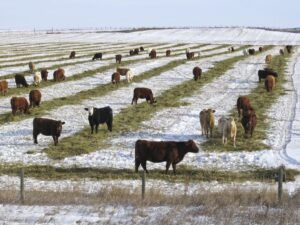
Consider a swath grazing example: without a feed test, a producer assumes the crop provides 58% TDN and 9% CP. Therefore, they decide to feed the crop to mid-gestating cows with a BCS of 3.0 with the expectation that the cows will maintain condition during the feeding period. However, the actual forage quality is lower—closer to 53% TDN and 7% CP. As a result, cows lose weight and calve underconditioned at a BCS of 2.5 instead of the ideal 3.0.
This drop in condition can significantly impact reproductive performance. Cows calving at BCS 2.5 face higher risks of abortion (2.5% vs. 1.6%), increased stillbirths (4% vs. 2.7%), and delayed rebreeding. For a 100-cow herd, this translates to at least two fewer live calves—representing over $4,275 in lost revenue in Western Canada (based on Oct–Nov 2024 Alberta prices at $415/cwt and 515 lb weight), or $4,150 in Eastern Canada (at $403/cwt).
The long-term impact can be even greater. Underconditioned cows have reduced pregnancy rates (91% at BCS 2.5 vs. 94% at BCS 3.0), potentially resulting in two to three additional open cows in this herd and nearly $8,000 in losses.
These outcomes could have been avoided with a simple feed test and modest ration adjustment—such as adding 3-4 lbs cereal grain—once the nutrient shortfall was identified.
Similarly, standing corn for winter grazing can appear adequate, but nutrient content varies widely depending on hybrid, maturity and kernel-to-stover ratio. Without testing, cows may not meet energy or protein targets, leading to hidden deficiencies that can compromise reproductive success. Testing can identify when protein supplementation is needed to match nutrient supply to demand.
Table 3. Preventing Productivity Losses from Underfeeding
| Body Condition Management | Without Feed Test | With Feed Test |
|---|---|---|
| Feed Value | Overestimated (assumed 58% TDN, 9% CP) | Tested (e.g., 52% TDN, 7% CP) |
| Supplement Added | No (underfeeding) | Yes (e.g., cereal grains or protein supplementation) |
| Cow Body Condition at Calving | BCS 2.5 | BCS 3.0 |
| Calf Losses | 2 per 100 (due to abortion or still birth) | — |
| Lost Revenue | Over $4,000 (2 calves × $2,100 avg. value) | — |
| Feed Test Cost (swath sample) | $0 | ~$110 (2 samples at $55/sample) |
| Outcome | Missed deficit, lost revenue | Timely correction, no additional calf loss |
Other Considerations: Comparing Costs and Preventing Problems
For producers that purchase most of their feed, having a feed test performed prior to purchase allows for a direct comparison between feeds on a cost-per-nutrient basis.
Feed testing is also a critical tool for preventing costly and potentially devastating issues related to moulds, mycotoxins, nitrates and mineral imbalances. A simple feed test can detect these risks early, allowing producers to adjust or blend feedstuffs to safeguard herd health and productivity.
bottom line:
Feed testing is a low-cost management tool that delivers high-value results. It helps producers make informed decisions—whether it’s stretching feed supplies, targeting nutrition by stage of production or avoiding costly underfeeding of nutrients.
In operations where every dollar and every calf counts, a small investment in feed testing can prevent thousands in losses and improve overall herd performance. It’s not just a test—it’s a tool for better returns.
Try the BCRC’s online calculator for Evaluating the Economic Value of Feeds Based on Nutrient Content.
LEARN MORE:
- Feed Quality, Testing & Analysis for Beef Cattle, BCRC Topic Page
- Nutrition in Beef Cattle, BCRC Topic Page
- Improve Your Bottom Line with the Power of Feed Testing, BCRC Post
- Have You Had Your Feed Tested? by John McKinnon, BCRC Post
- Feed Testing the First Step in Planning Winter Feeding Program by John Campbell, The Western Producer
- Feed Tests Especially Important During Drought by John Campbell, The Western Producer
- List of feed testing labs, BCRC
Sharing or reprinting BCRC posts is welcome and encouraged. Please credit the Beef Cattle Research Council, provide the website address, www.BeefResearch.ca, and let us know you have chosen to share the article by emailing us at [email protected].
Your questions, comments and suggestions are welcome. Contact us directly or spark a public discussion by posting your thoughts below.
